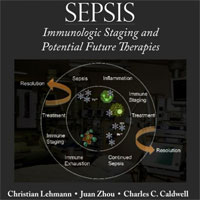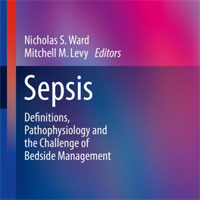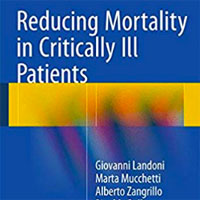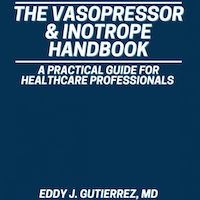Tag: septic shock
Half of Sepsis Patients Face Death Within Two Years
Half of all patients with sepsis admitted to an emergency medical department died within two years, according to Danish researchers investigating factors that could predict outcomes for these patients. Dr. Finn E. Nielsen,... read more
Iloprost and Organ Dysfunction in Adults With Septic Shock and Endotheliopathy
In this randomized clinical trial of adults in the ICU with septic shock and severe endotheliopathy, infusion of iloprost, 1 ng/kg/min, for 72 hours did not reduce mean daily SOFA scores compared with placebo. In a clinical... read more
Human albumin solution for on-pump cardiac surgery: benefit or burden?
Deidentified individual participant data collected during the HAS FLAIR-II trial (and the data dictionary) will be shared beginning two years after article publication with no end date. These data will be available to... read more
Early sodium bicarbonate therapy for critically ill patients with septic shock and acute moderate metabolic acidosis
In recent decades, septic shock has continued to be a life-threatening health problem around the world. Meanwhile, metabolic acidosis (MA) is also well known in critically ill patients, and even moderate metabolic acidosis... read more
Fluid boluses and infusions in the early phase of resuscitation from septic shock and sepsis-induced hypotension
Fluid administration is the first line treatment in intensive care unit (ICU) patients with sepsis and septic shock. While fluid boluses administration can be titrated by predicting preload dependency, the amount of other... read more
Efficacy of β-Blockers in Decreasing Mortality in Sepsis and Septic Shock Patients
This study suggests that the use of β-blockers in sepsis and septic shock patients is associated with a significant decrease in in-hospital mortality and also associated with better patient outcomes. As β-blockers cause... read more
Risk Factors for Mortality in Patients with Sepsis or Sepsis-associated Delirium Based on the MIMIC-IV Database
Research on the severity and prognosis of sepsis with or without progressive delirium is relatively insufficient. We constructed a prediction model of the risk factors for 28-day mortality in patients who developed sepsis... read more
Effectiveness of Fludrocortisone and Hydrocortisone vs. Hydrocortisone Alone in Septic Shock
Steroid use in sepsis is controversial. For example, fludrocortisone–hydrocortisone together may improve survival in septic shock, while hydrocortisone alone may not. A recent subgroup analysis of the APROCCHSS trial... read more
BPRI and Clinical Outcomes in Patients with Septic Shock
Use of the novel dose-effect index, Blood Pressure Response Index (BPRI) was proposed to allow rapid bedside assessment of the reactivity of septic shock patients to vasoactive drugs, as isolated MAP or VIS cannot reflect... read more
Fluid Accumulation Syndrome in Sepsis and Septic Shock
In this review, we aimed to comprehensively summarize current literature on pathophysiology, relevance, diagnosis and treatment of fluid accumulation in patients with sepsis/septic shock. Fluid accumulation syndrome (FAS)... read more
Complex Infusion Volumes Interaction and Confounding Factors with Lactate Clearance in Septic Shock
A recent article by Ahlstedt et al. published in Intensive Care Medicine examining the impact of restrictive fluid management on lactate clearance in septic shock patients within the intensive care unit (ICU) piqued our interest.... read more
Vasoconstriction in Septic Shock
Septic shock is associated with endothelial dysfunction leading to arterial and venous dilation, alterations in regional blood flow distribution, and microcirculatory disturbances. Fluids and vasopressors are the key... read more
Hydrocortisone, Ascorbic Acid, and Thiamine Combination Therapy Efficacy for the Management of Sepsis and Septic Shock
In this systematic review, we found that hydrocortisone, ascorbic acid, and thiamine (HAT) regimen may be useful for reducing the duration of vasopressor use and improve organ functions in patients with sepsis and septic... read more
Vasopressor Reduction Effect of Polymyxin B Hemoperfusion
This study aimed to evaluate the effect of polymyxin B hemoperfusion (PMX-HP) in patients with peritonitis-induced septic shock who still required high dose vasopressors after surgical source control. A total of 338 patients... read more
Remimazolam Effect on Hemodynamics in Patients with Septic Shock
Remimazolam is safe and effective for inducing general anesthesia in patients with septic shock. Low, medium, and high doses of remimazolam can maintain a stable hemodynamic state, and the recovery of hepatic and renal function... read more
Fluid Boluses May Improve CRT
Several studies have validated capillary refill time (CRT) as a marker of tissue hypoperfusion, and recent guidelines recommend CRT monitoring during septic shock resuscitation. Therefore, it is relevant to further explore... read more
Methylene Blue in Sepsis and Septic Shock
This systematic review and meta-analysis evaluated the effect of MB in three RCTs. They found that MB treatment significantly reduced time to vasopressor discontinuation, days on mechanical ventilation, and length of ICU... read more
Cardiac Index and Heart Rate as Prognostic Indicators for Mortality in Septic Shock
Our retrospective study shows that monitoring cardiac index and heart rate in patients with septic shock may help predict the organismal response and hemodynamic consequences, as well as the prognosis. Thus, healthcare providers... read more
Endotoxin Role in Septic Shock
Septic shock can be caused by a variety of mechanisms including direct effects of bacterial toxins such as endotoxin. Annually, approximately 5–7 million patients worldwide develop sepsis with very high endotoxin activity... read more
Enteral Citrulline Supplementation vs. Placebo in Mechanically Ventilated Patients
Among mechanically ventilated ICU patients without sepsis or septic shock, enteral L-citrulline administration did not result in a significant difference in SOFA score on day 7 compared to placebo. Of 120 randomized patients... read more
The Vasopressin Loading for Refractory Septic Shock Study
Vasopressin loading may be safely introduced for septic shock. Vasopressin loading may be used to predict responses to its continuous infusion and select appropriate strategies to increase blood pressure. 92 patients were... read more
Blood Purification for Adult Patients with Sepsis
Our network meta-analysis (NMA) suggests that plasma exchange and polymyxin-B hemoperfusion may provide potential benefits for adult patients with severe infection or sepsis/septic shock when compared with standard care alone,... read more









